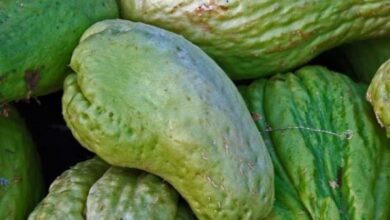Polygala Myrtifolia: [Cultivation, Irrigation, Associations, Pests and Diseases]
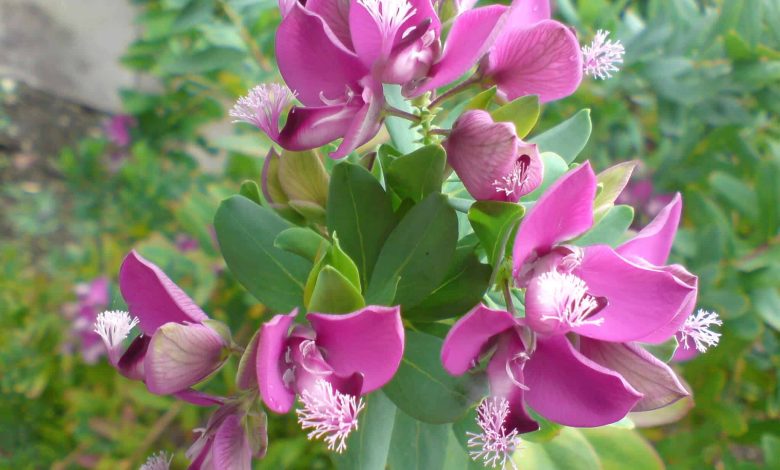
Important points when sowing Polygala myrtifolia
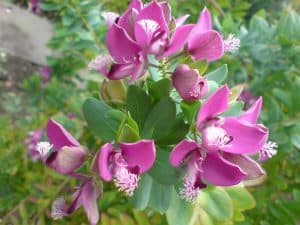 Where to sow? Full light. It needs a lot of sunlight.
Where to sow? Full light. It needs a lot of sunlight.- When? In spring and late summer.
- How do we prepare the land? Removed, removing weeds. With substrate rich in organic matter and humus.
- How do we water? with drip
- How often do we water? Inabundant summer. Little rest of the year.
- Plagues and diseases? Resistant to diseases, Mealybugs and aphids can sometimes appear.
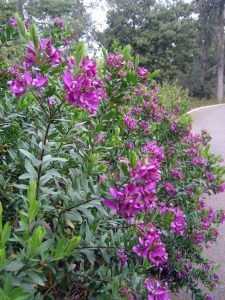 Polygala myrtifolia is a perennial shrub native to South Africa, it belongs to the Polygalaceae family and is known as polygala or Cape milkweed. Today it can be found in many places, preferably with warm climates.
Polygala myrtifolia is a perennial shrub native to South Africa, it belongs to the Polygalaceae family and is known as polygala or Cape milkweed. Today it can be found in many places, preferably with warm climates.
Its name derives from the Greek words «poly», which means a lot, and «gala» milk, due to the ability of many species to produce a milky sap. In Latin myrti is «myrtles» and folia are «leaves».
One of its most striking features of this plant are its mauve flowers. It is a very resistant and fast-growing species that adapts to multiple gardens, both indoors and outdoors.
The size of the polygala ranges between 1.5 and 3 meters. It has a woody and resistant stem, with many branches covered with small, oval, green or even gray leaves.
Polygala myrtifolia consists of more than five hundred species that thrive in warm regions around the world. It is an elegant shrub, upright, highly valued by end consumers for its early and marvelous purple flowering.
When to sow Polygala myrtifolia?
Polygala myrtifolia can be grown from seed in the spring and from semi-ripe cuttings that can be taken and planted in late summer.
Its best planting time is definitely spring, especially in regions with very dry climates.
Where to do it?
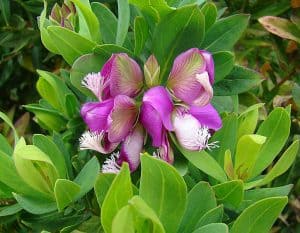 Polygala myrtifolia is a very resistant plant, but it will grow better in full sun, both in a pot and in the ground, although in pots it is necessary to be more careful with watering as it consumes more water.
Polygala myrtifolia is a very resistant plant, but it will grow better in full sun, both in a pot and in the ground, although in pots it is necessary to be more careful with watering as it consumes more water.
This plant is very common to use and create massifs in the garden, forming hedges, or as an isolated specimen.
And although it needs a lot of sun, it can also live in semi-shade areas that vary with the seasons, although it will produce fewer flowers. It has considerable tolerance to cold, but in the presence of prolonged frosts it is better to find a place for its shelter.
As it has a very good adaptation to maritime climates, it is ideal as a shrubby plant for coastal gardens, slopes and rockeries due to its low maintenance.
How to prepare the land?
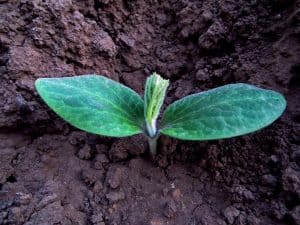 The type of soil for growing plants is extremely important. The polygala myrtifolia is not demanding regarding the soil, but it is necessary to provide it with a good substrate rich in organic matter.
The type of soil for growing plants is extremely important. The polygala myrtifolia is not demanding regarding the soil, but it is necessary to provide it with a good substrate rich in organic matter.
It prefers saline-type soils, but good drainage and a certain amount of humus must be guaranteed for a good development.
If the soil does not provide what the polygala myrtifolia requires then it cannot grow, multiply or flower well and healthy. It requires composting, either in liquid form or a slow-release type of compost.
How do we water Polygala myrtifolia?
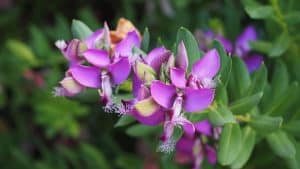 In the case of the polygala myrtifolia, watering should be abundant during the hottest season in the summer and a little less or moderate during the rest of the year.
In the case of the polygala myrtifolia, watering should be abundant during the hottest season in the summer and a little less or moderate during the rest of the year.
This plant tolerates water scarcity. However, if you want to see it bloom throughout the year, you have to water it frequently, but without flooding it.
How do we plant a Polygala myrtifolia step by step?
The polygala myrtifolia does not require great care or special procedures for its cultivation, however, it is recommended to follow the following steps to obtain a good multiplication.
- Select the cutting or seed
- Prepare a substrate rich in organic matter, light with some humus and with good drainage capacity.
- The substrate must be special for outdoor plants since the polygala myrtifolia is a rustic plant.
- Choose a pot that is not excessively large. Thus, the Polygala myrtifolia will take better advantage of the new substrate since the roots tend to develop in greater quantity on the perimeter of the new pot.
- Place a small layer of gravel or expanded clay at the bottom of the pot to promote drainage.
- Sow in early spring and in full sun to take advantage of the hottest months to take root more strongly.
- Water abundantly and without flooding.
- Locate the plant in full sun.
- Fertilize every 20 days with mineral fertilizer during the summer to facilitate flower production.
In the case of planting the polygala myrtifolia in the garden and if the soil is very clayey, it is advisable to add washed river sand to increase its aeration and prevent it from caking.
The soil should also be enriched with the substrate for outdoor plants between 20 to 50% depending on the quality of the soil.
What favorable associations does it have?
The association of crops of compatible plants produces benefits with respect to their cultivation separately, in addition to the use of light, water and/or nutrients.
Polygala myrtifolia is an extremely elegant shrub that could well add that distinctive touch to the garden. Precisely and thanks to its versatility that allows it to form borders or massifs, it can be combined with other plants to contrast colour, shape and texture.
What pests and diseases attack Polygala myrtifolia?
 Polygala myrtifolia is not usually affected by many pests or insects. Drier climates can cause mealybug or aphid problems.
Polygala myrtifolia is not usually affected by many pests or insects. Drier climates can cause mealybug or aphid problems.
These pests can be eradicated if you are attentive to their appearance. Other problems stem from poor soil drainage or lack of fertilizer.
More often than not, the plant will not flower, look unhealthy if it is very waterlogged, does not receive enough sunlight or does not have nourished soil.
Bibliography and references
- My First Knowledge Encyclopedia. Snake plants and conservation. Published by Grolier Incorporated. New York, 1961. Pages 80-81.
digital database
- Hogarmania.com. Polygala myrtifolia. Reproduced from: https://www.hogarmania.com/jardineria/fichas/arbustos/polygala-myrtiflora-25743.html
- Gardencenterejea.com. Care of the polygalia myrtifolia or polygala. Reproduced from: https://blog.gardencenterejea.com/polygala-myrtifolia-arbusto/
- Allhusqvarna.com. A touch of mauve in your garden throughout the year. Reproduced from: https://www.todohusqvarna.com/blog/polygala/

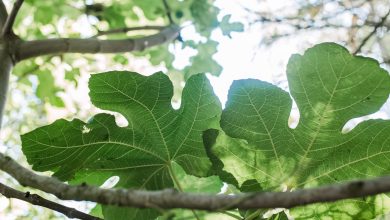
![Photo of Jericho Flower: [Cultivation, Care, Pests and Diseases]](https://www.complete-gardening.com/wp-content/uploads/2022/08/jericho-flower-cultivation-care-pests-and-diseases-390x220.jpg)
![Photo of Teucrium: [Cultivation, Irrigation, Associations, Pests and Diseases]](https://www.complete-gardening.com/wp-content/uploads/2021/06/Teucrium-planta-390x220.jpg)
